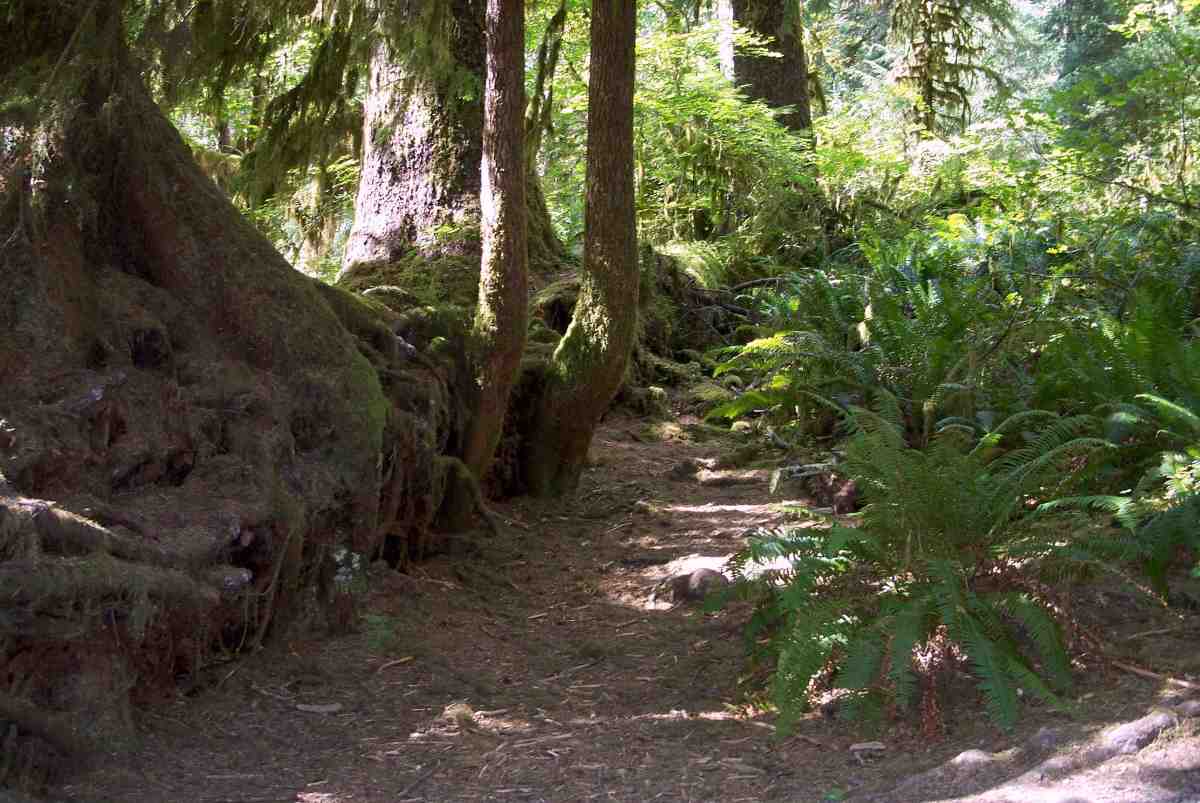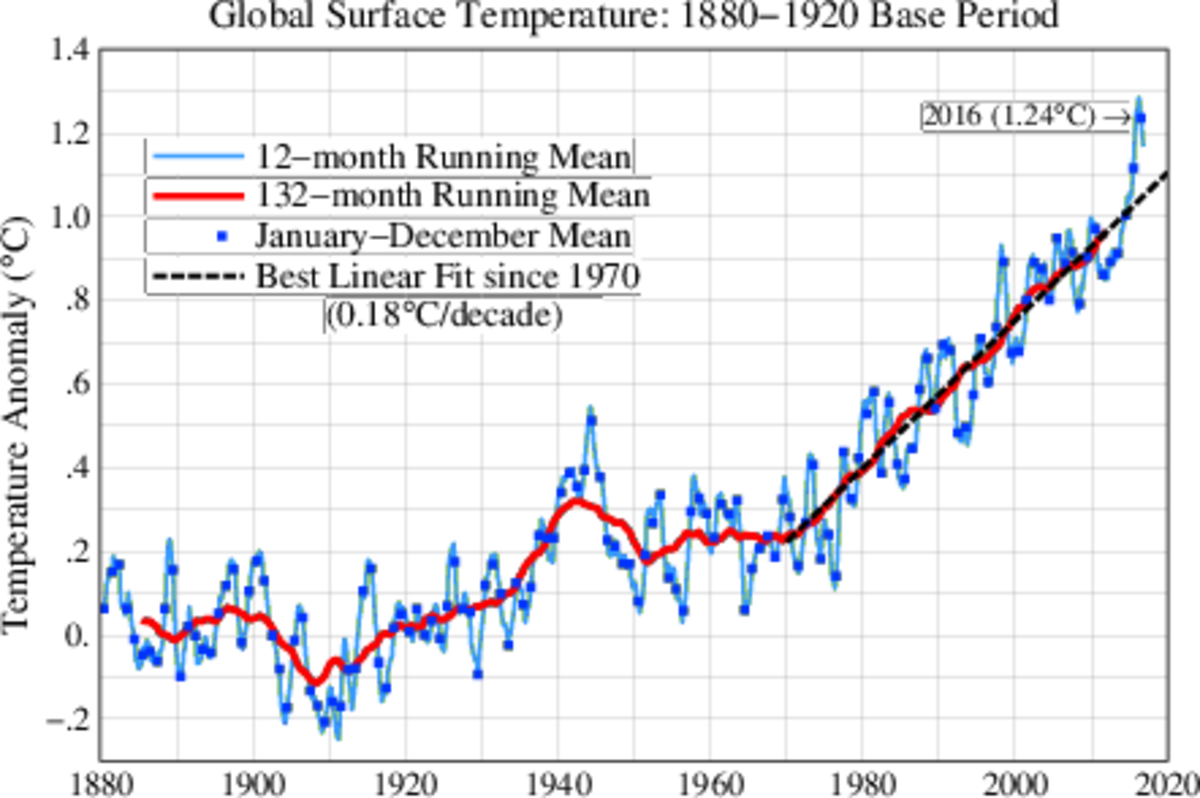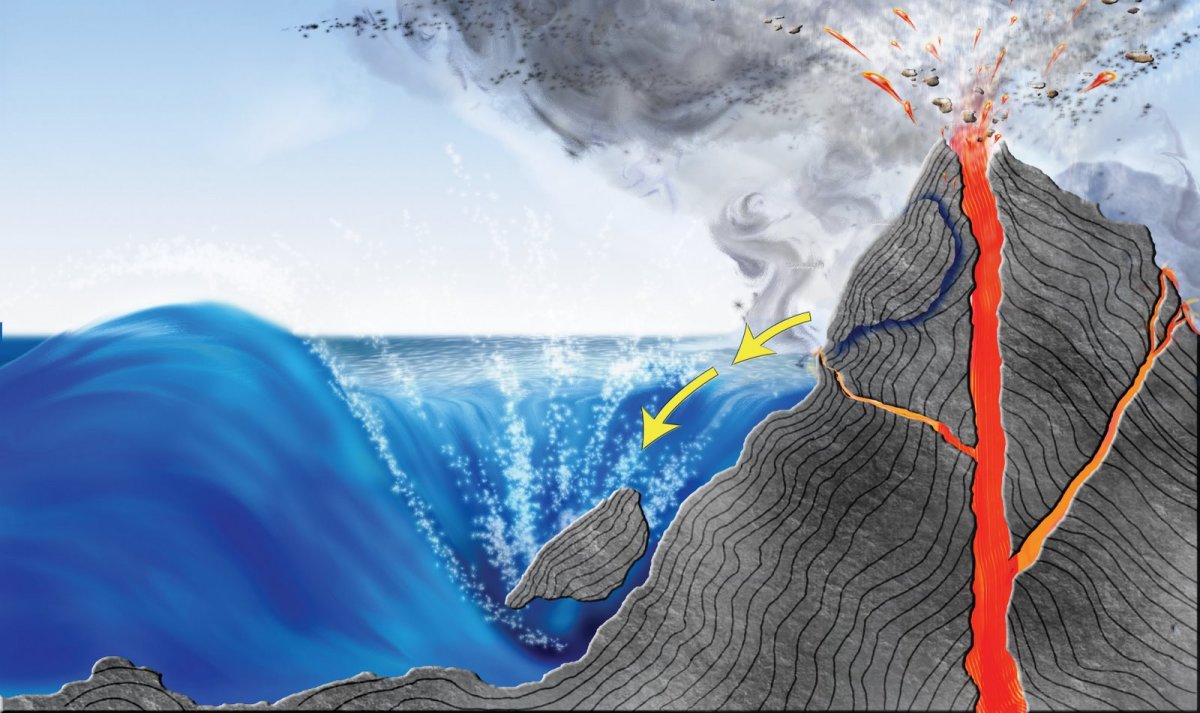Weather and Climate - Do Forests Attract Rain?
Firewood and Charcoal as Sources of Energy
The cost of energy is right now very high. The population of the world is increasing very fast well past the seven billion people and so is the demand of the energy needed to sustain them. Most of the world’s population relies on firewood and charcoal as sources of energy for cooking.
Decreasing Forest Cover
In many countries, the forest cover has been decreasing every year. Take for example, Haiti which has reduced her forest cover by 5.7% between 1990 and 2000. Over the same period, Burundi (an extension of the Congo rainforest) reduced her forest cover by 9% whilst Mexico (neighboring the Amazon rainforest) reduced her forest cover by 1.1%. The Amazon Basin, Congo Basin and Australia’s Daintree rainforest are the world’s major water catchments areas, and destruction of these rainforests will affect the lives of billions of people, animals, plants and other living organisms as the three rainforest are significant drivers of the weather and climate in planet earth.
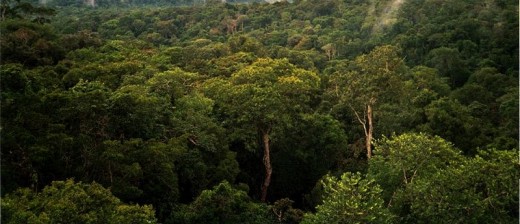
Why People Clear Forests
Reduction of forest cover is caused by deforestation which happens when people clear the forests for the following reasons:
- To get firewood, charcoal, or timber
- To create new settlement areas
- To convert the land to agricultural use, or for infrastructure
Do Forests Attract Rain?
Water is life. To have water you need have rain. To have rain, do you need to have forest? “Do forests attract rain?” is a very controversial question that some people will not agree with. Large trees in a forest have roots that run deep in the soil that picks water stored in the deep soil and into the trees. Once that water get in the plants it escapes in the atmosphere in a process called evaporation or evapotranspiration. When that water gets in the atmosphere, it becomes free-for-all as it can be driven by wind to far away places from the neighborhood of the forest? The opposite is also true – that trees prevent loss of water from the top layer of soil as they block water runoff and soil erosion, and they also prevents the dry air and the sun’s high temperatures from reaching the soil.
Dynamics of Weather and Climate
Do forests attract rain?” The answer is, yes. To understand this we need to look at the dynamics of weather and climate using on a bigger scale. Weather and climate is determined by four main factors, namely:
1. Rotation (movement) of the Earth
2. The sun’s energy
3. The Earth’s Open Land Mass
4. The Earth’s Open Water Mass
Explaining Weather and Climate
If you were to form an equation to explain weather and climate, it would heavily depend on the above listed factors. A slight change of any of the above factors will change our weather and climate. For example:
- When the Earth rotates relative to the Sun towards the east we get day and night. We certainly should be able to see that there is a difference between a day and a night.
- When the Earth moves around its orbit, there is always a portion of the earth that lean more towards the Sun than the other. This causes the northern hemisphere to have summer and the southern hemisphere to have winter, and the opposite is also true. When one portion of the earth is heated more than the other portion, a pressure differential is created, which in turn creates the different circulations of winds that we have. This is what brings about the different seasons that we have.
- The sun’s energy is always more of a constant. If you change that energy that reaches the earth, you will get a change in weather and climate (for better or worse).
- The sun’s energy reaches the earth to heat the land mass and the water mass. If we reduce the land mass we in essence increases the water mass. A change in earth’s open land mass or a change in earth’s open water mass will equally change the weather and climate that we have. A rainforest (like in the Amazon or Congo rainforest) acts more like water mass rather than a land mass. This is because a rainforest is always holding a lot of water unlike the open grasslands and deserts.
Deforestation
Man has always been changing the earth’s land mass and water mass by deforestation. When you cut down one tree without a replacement, and that other person does the same, it won’t take long before the earth’s water mass is substantially reduced in favor of an increased land mass. A reduced water mass in favor of an increased land mass can only mean a reduced net precipitation.
Evapo-Transpiration
So, do forests attract rain?” Yes. How does this come about in the equation for rain? The thing is that rainforests do holds a lot of moisture and that trees offer far much large surface area for evapo-transpiration of water. This would mean that forests are considered to act more like water mass just like a very large lake. Any time you cut down a tree without a replacement, you are in a small way changing the winds circulations which will change weather and climate.
Burundi Reduced Her Forest Cover By 9%
In a period of 10 years, between 1990 and 2000, Burundi (of the Congo rainforest) reduced her forest cover by 9%. If every country reduced her forest cover by 9%, we all would be in a lot of problems. Weather and climate has no boundaries. The world’s weather and climate is like a seesaw – a change of forest cover in Amazon rainforest may affect weather and climate in faraway places like India whilst a reduction in forest cover in the Congo rainforest may as well affect weather and climate in Europe.
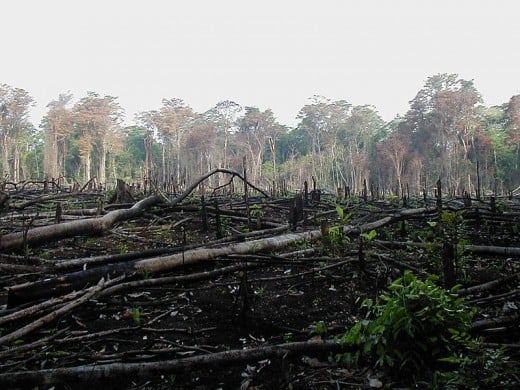
Managing Forests
People (and Governments) needs to manage forests and trees with diligence just like they manage their treasuries in their central banks. Firewood, charcoal and timber are byproducts of forests which people need to use. If a professional farmer can manage his cows to give him milk and meat, and still retain his cows healthy, so is it that we should manage our forests to give us charcoal, firewood and timber, and still retain our forests in healthy shape without a reduction in forest cover.
Cost of Energy is Very High
But we have one problem that we do not like talking about because it introduces politics that nobody wants to hear. This is all about managing our population to match with the natural resources available. Right now the cost of energy is very high. People (including poor people) must eat and to eat they must cook. To cook, they need energy and that energy must come from somewhere preferably in what may look like “free of charge” source. To get free energy you just need cut down a tree somewhere and you get your charcoal and firewood. If there is no replacement of the tree you’ve cut down, then, that charcoal and firewood is in reality not free as Mother Nature will teach us.
Healthy Crops in Greenhouses
Wealthy people are known to grow healthy crops in greenhouses. They are able to have green and healthy crops because in a greenhouse enclosure, one is able to control the following:
- temperature
- light (photosynthesis)
- humidity (amount of moisture in atmosphere)
- water (moisture in the soil)
Watering a Lawn in Dry Season
You can water your open lawn or a golf course but no matter how much water you use, your lawn or golf course will never get as greener during the dry season as it would during the rainy season. Why? This is because you are unable to control the amount of moisture in the atmosphere (humidity) and the air temperature. When we live next to a forest or in an area with many trees we say the place is good as it has a cool breeze. This is because trees provide a temperature differential that creates the cool breeze (humid and cool atmosphere) and moderate temperatures. Trees are therefore providing the two ingredients, humidity and moderate temperature, that the guy watering his lawn in dry season is not able to provide. This would therefore mean that by preserving trees in our neighborhoods to our farms, we are able a better humidity and temperatures for better crops.
Each Person Needs 100 Trees to Clean His Carbon Dioxide
Man is a huge consumer of oxygen. For two men to have enough oxygen to survive for one year, they need only a single tree to provide all that oxygen. Trees are a huge consumer of carbon dioxide. A single tree can consume a whopping 20 kilograms of carbon dioxide per year. Statistics are showing that a single person in the developed world produces 2000 kilograms of carbon dioxide per year. This means that a single person will need 100 mature trees to clean carbon dioxide being produced by him. If we do not have enough trees to absorb our carbon dioxide, then, we shall have excess carbon dioxide in the atmosphere. This excess carbon dioxide is what prevents heat from escaping from earth – the earth becomes like a greenhouse. The result of this heating is a change in weather and climate.
A Single Tree Has Benefits Worth $162,000
USDA Forest Service Pamphlet Number 1-92-100 lists the benefits of what a single tree generates in a period of 50 years as follows:
- A tree generates $31,250 worth of oxygen
- A tree provides $62,000 worth of air pollution control
- A tree recycles $37,500 worth of water
- A tree controls $31,250 worth of soil erosion
That’s a total of $162,000. In many countries, a 40 kilograms bag of charcoal is still selling under a dollar. If a single tree produces 50 bags of charcoal, then, that’s about $50 per tree. So, a $50 investment from a guy in London can prevent another guy in Amazon from ‘destroying’ a natural investment of $162,000?
Carbon Credits
Perhaps it’s in view of the above that the Kyoto protocol came up with the environmental treaty that those emitting the most greenhouse gasses (carbon dioxide, methane, nitrous oxide, sulphur hexafluoride) should compensate those who grow trees in a system called emissions trading of carbon credit. As an example, it works like this: A guy “A” in South Africa who has planted trees will be allocated carbon credits to sell. A guy “B” in Australia who runs an industrial complex can only run his business if he buys carbon credits equivalent to greenhouse gases he emits. When many people are doing this, we get buyers and sellers of carbon credits. Now that is a market just like the stock market. The whole setup of selling and buying carbon credit is complex than we have stated here. To get an entry in this market you will need to get a consultant who will advice you on how to go about it. American entrepreneurs are expected to benefit the most from this market since they are ahead in infrastructure as well as having smart entrepreneurs and consultants. Unfortunately, the United States, Afghanistan and the new state of Sudan are yet to ratify the Kyoto protocol. Like the United States, not everyone is happy with the Kyoto protocol especially the clause that says forests planted prior to Kyoto protocol (1990) are not eligible for carbon credits but on the other hand the same forests are eligible for liabilities if the said forests are cleared without replanting (it’s as if they had participated in the planting of those forests).
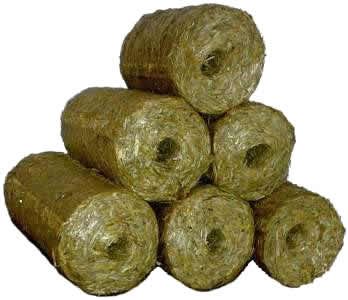
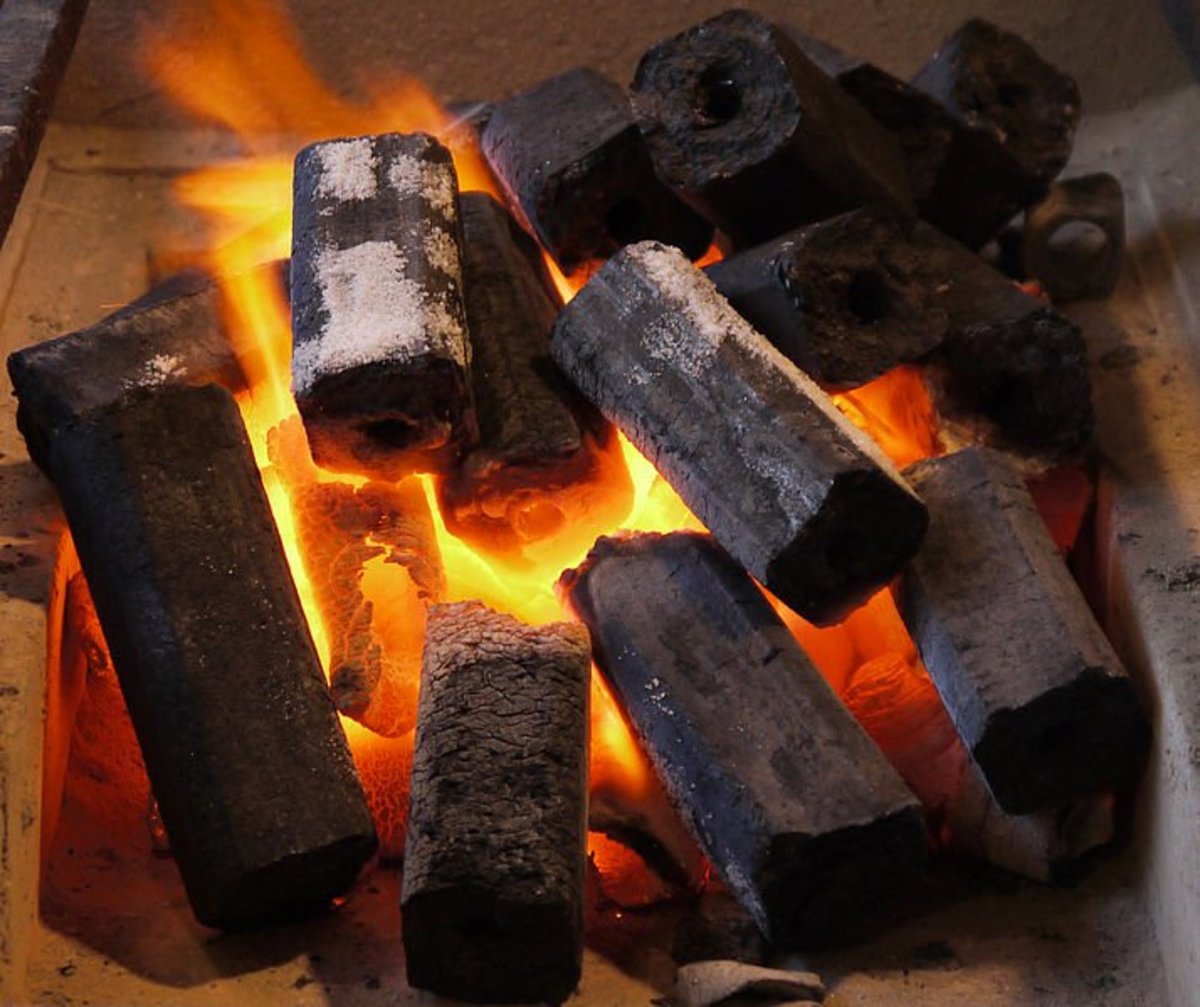
Conversion of Biomass to Charcoal Briquettes
We have agreed that some people are too poor to afford any other source of energy other than charcoal and firewood. These poor people must live and eat like anybody else. If we prevent them from cutting trees for cheap energy from charcoal and firewood, what other options do we have for them? When you look throughout many countries, what you see most common are crops and animals waste ranging from rice husk, coffee husk, coir pith, jute sticks, bagasse, groundnut shells, sawdust, mustard stalks, cotton stalks, maize/corn, wheat, cassava, and cattle waste, etc. These waste are from the crops and animals that are grown to feed the masses. When crops are harvested, there is a huge waste from these agricultural plants. There is also a huge waste from animal manure as well as paper waste and sawdust from saw-mills, homes and offices. Whilst animal manure and agricultural waste can be ploughed back into the farm as manure, in most cases it’s being burned or just left to rot. These agricultural materials are called biomass. It is from the biomass that we should focus our attention as the potential source of energy. Carbonization and Pyrolysis of the Biomass can yield sufficient charcoal dust that just need be pressed and dried in the sun to make charcoal briquettes that would replace lump charcoal and firewood. By training the masses on how to convert their agricultural waste into charcoal briquettes, we’ll have moved an additional step towards the reduction of deforestation that is becoming very common in many countries. The beauty of this is that if this conversion of biomass into charcoal briquettes is well structured, it can earn additional money from carbon credits. The market for carbon credits is poised to turn out as the most lucrative market in the future.
If you would like to learn How to Make a Simple Briquette Press, you can check it here.
If you have liked this article, and you would want this page to keep up and improved, you can help in any way you can. A free way to help would be to link back to this webpage from your web page, blog, or discussion forums.
The Author’s page is designed to help beginners and average readers make some money as an extra income to supplement what they may be earning elsewhere - details of which you can find in My Page, if you will.




